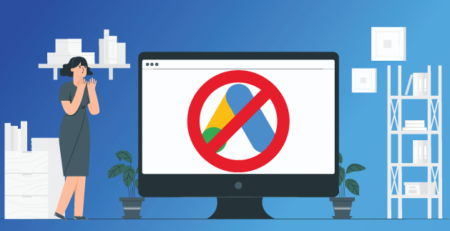Google Algorithm Updates: A Decade in Retrospect
In this article, we will delve into the history of Google algorithm updates over the past decade. From the early years of Google to the latest Core Web Vitals update, we will provide a detailed overview of each significant update, its impact on search engine optimization (SEO), and the lessons learned for webmasters and digital marketers.
Google’s Early Years: 2000-2009
The early years of Google saw several critical updates, with the search engine continually refining its algorithms to improve user experience. Some of the most significant updates from this era include:
- Google Toolbar (2000): Introduced the PageRank system, which assigned a value between 0 and 10 to webpages, based on their importance and relevance.
- Florida Update (2003): Aimed at eliminating keyword stuffing and other manipulative SEO tactics.
- Universal Search (2007): Integrated various search verticals, such as news, images, and videos, into the main search results.
Panda: Unleashing Quality Control (2011)
The Panda update targeted low-quality content, such as duplicate, thin, or spammy content, with the goal of prioritizing high-quality and informative websites. Key takeaways from the Panda update include:
- Focus on creating unique, valuable, and well-structured content.
- Regularly audit and update your website to eliminate low-quality content.
Penguin: Tackling Link Schemes (2012)
The Penguin update aimed at penalizing websites participating in manipulative link schemes, such as buying links or using private blog networks (PBNs). Key lessons from the Penguin update include:
- Acquire high-quality, natural backlinks from reputable sources.
- Avoid link schemes and other black-hat SEO tactics.
Hummingbird: Focusing on Semantic Search (2013)
Hummingbird was designed to improve Google’s understanding of search queries and provide more accurate search results. This update marked a shift toward semantic search, emphasizing:
- Focus on writing content that answers users’ queries in a clear and concise manner.
- Optimize content for long-tail keywords and conversational search phrases.
Pigeon: Boosting Local Search (2014)
Pigeon aimed to enhance local search results by considering factors such as proximity, relevance, and prominence. This update reinforced the importance
of local SEO, with key takeaways including:
- Ensure your website contains accurate and up-to-date local business information, such as contact details and addresses.
- Encourage customer reviews on platforms like Google My Business and Yelp.
- Optimize your website for local keywords and include location-specific content.
Mobilegeddon: Prioritizing Mobile-friendly Websites (2015)
Mobilegeddon emphasized the importance of mobile-friendly design, penalizing websites that were not optimized for mobile devices. Key lessons from this update include:
- Implement responsive design to ensure your website is accessible and functional across all devices.
- Optimize site speed and performance for mobile devices.
- Consider user experience on mobile devices when designing your website’s layout and navigation.
Possum: Enhancing Local SEO (2016)
The Possum update further refined local search results by considering the searcher’s location and filtering out duplicate or similar local listings. Key takeaways from Possum include:
- Diversify your local SEO strategy by targeting multiple locations and niche-specific keywords.
- Regularly update and maintain your Google My Business listing to ensure accuracy and relevance.
Fred: Penalizing Ad-heavy Websites (2017)
Fred targeted websites with excessive advertisements and thin content, penalizing those that prioritized monetization over user experience. Key lessons from the Fred update include:
- Balance ad placement and content to avoid disrupting user experience.
- Prioritize high-quality, informative content over ad revenue.
BERT: Advancing Natural Language Processing (2019)
The BERT update leveraged advanced natural language processing techniques to better understand user queries and deliver more relevant search results. Key takeaways from BERT include:
- Write content that is clear, concise, and focused on answering user queries.
- Avoid keyword stuffing and prioritize content quality over keyword density.
Core Web Vitals: Prioritizing User Experience (2021)
Core Web Vitals aimed to prioritize user experience by focusing on three key metrics: Largest Contentful Paint (LCP), First Input Delay (FID), and Cumulative Layout Shift (CLS). Key lessons from Core Web Vitals include:
- Optimize your website for speed and performance, focusing on the LCP metric.
- Enhance interactivity and responsiveness, keeping the FID metric in mind.
- Ensure visual stability by minimizing layout shifts, addressing the CLS metric.
The Future of SEO: Embracing Lessons from Google’s Algorithm History
In this comprehensive guide, we have traced the fascinating journey of Google’s algorithm evolution over the past decade. The consistent theme throughout these updates has been the prioritization of user experience, high-quality content, and natural SEO practices. By understanding and adapting to these updates, webmasters and digital marketers can ensure their websites remain competitive and visible in search results.
In conclusion, the key takeaways from a decade of Google algorithm updates include:
- Create unique, valuable, and well-structured content.
- Optimize for local SEO and mobile devices.
- Prioritize user experience, focusing on Core Web Vitals.
- Acquire high-quality, natural backlinks.
- Avoid manipulative SEO tactics, such as link schemes and keyword stuffing.










